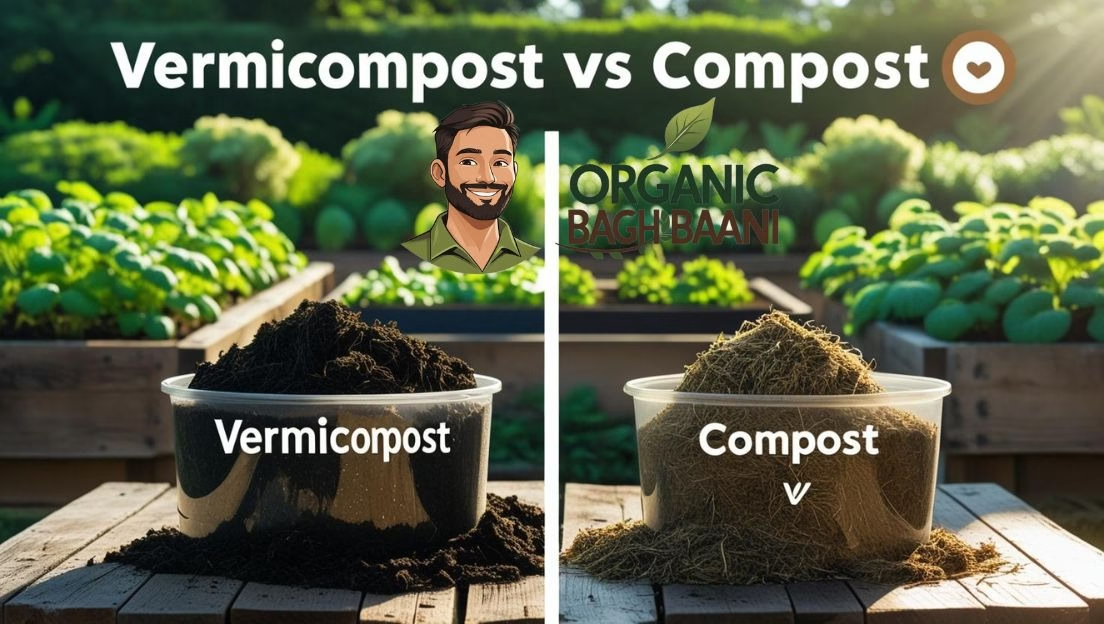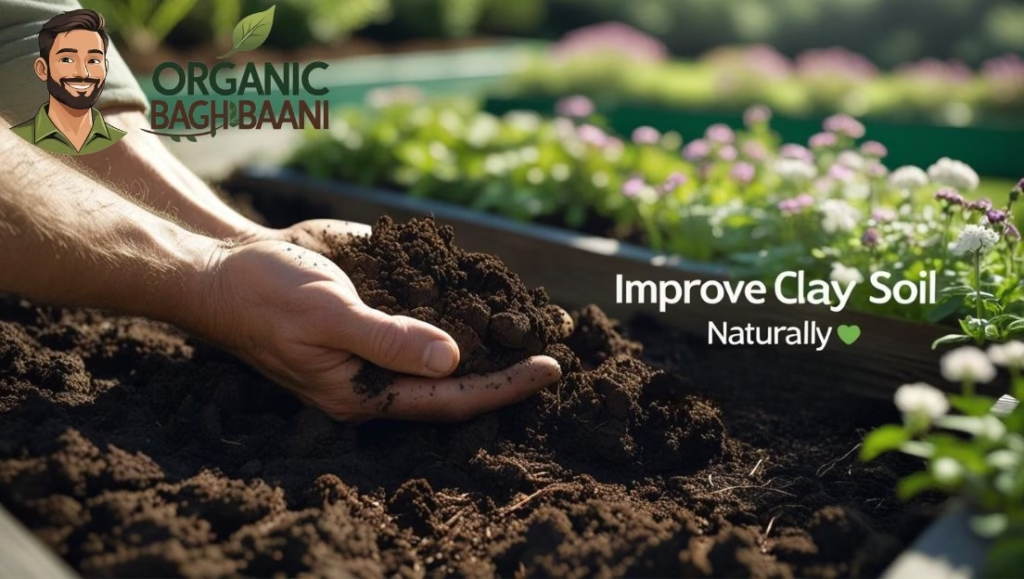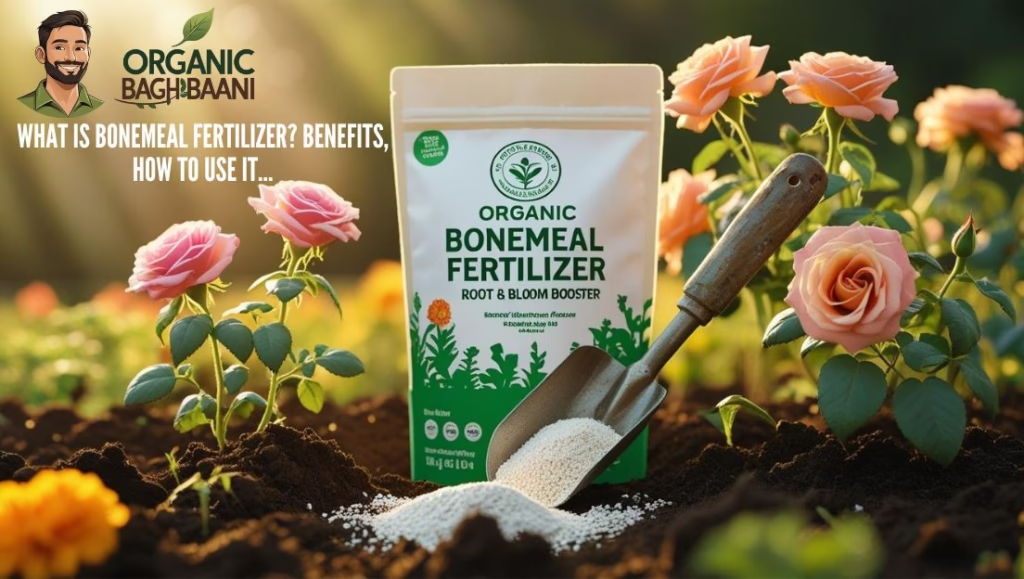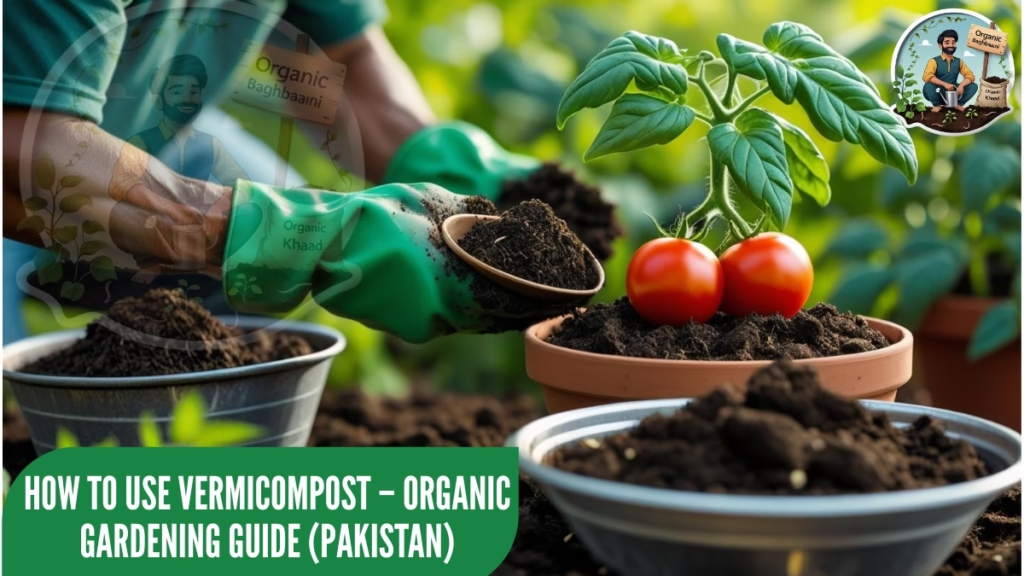Best Gardening Tips and Fertilizer Guides
Vermicompost vs Compost – What’s Best for Raised Beds and Containers?

What’s Best for Raised Beds and Containers – Vermicompost or Compost
Whether you’re growing tomatoes on a balcony in Berlin or planting kale in a London backyard, healthy soil is the secret to success. But many beginner gardeners ask:
Should I use compost or vermicompost in my raised beds and containers?
At Organic Baghbaani, we’ve worked with both and there are big differences in how they impact soil texture, moisture, and plant growth. Let’s break it down so you can choose the best option for your garden.
What is the Difference Between Compost and Vermicompost?
| Feature | Compost | Vermicompost |
|---|---|---|
| Source | Decomposed organic matter | Worm-processed compost |
| Texture | Coarse, fibrous | Fine, dark, crumbly |
| Nutrient Content | Medium | High, bioavailable |
| Microbial Life | Moderate | Very high |
| Speed of Impact | Slower | Faster (visible in 1–2 weeks) |
| Odor | May smell earthy | Neutral or slightly sweet |
| Ideal For | Soil improvement | Plant growth boost |
🌿 When to Use Compost
Compost is best when you need:
- Bulk organic matter to improve poor or sandy soil
- A mulch or top-dressing layer
- Base amendment for large garden beds
It adds structure, helps retain water, and slowly feeds soil microbes over time.
When to Use Vermicompost
Vermicompost is ideal for:
- Containers and pots where space is limited
- Raised beds for vegetables and herbs
- Quick results in weak or nutrient-poor soil
It works like a “plant tonic”. Small amounts go a long way. Because worms pre-digest the material, nutrients are immediately available to roots.
Best Practice: Combine Both
For the best soil health and plant performance, use a 50:50 mix of compost and vermicompost in containers and beds.
💡 Example mix for a 12-inch pot:
- 3 parts potting soil
- 1 part compost
- 1 part vermicompost
- Optional: a handful of biochar or neem cake for added structure/pest control
Our Farm’s Real Use Case
At Organic Baghbaani, we grow leafy vegetables and flowering plants in both ground beds and large containers. We’ve noticed that vermicompost helps seedlings establish faster, especially in pots, while compost is great for building long-term soil structure.
We also rotate between the two depending on season:
- Spring/Summer: Focus on vermicompost for fast growth
- Autumn/Winter: Use compost to build soil during dormancy
Eco-Friendly & Safe
Both compost and vermicompost are:
- 🐶 Dogs, Pets and kid-safe
- 🌱 100% organic and chemical-free
- 🛒 Available for bulk and home gardeners
- 💚 Low carbon footprint when locally sourced
Shop Natural Soil Boosters
Looking for high-quality amendments?
- Vermicompost (Worm Castings)
- [Farm-made Organic Compost – Pakistan Only (Coming Soon)]
- Neem Cake & Biochar Add-Ons
📬 International orders: contact@organicbaghbaani.com
📦 Wholesale & container loads available on request.
✅ Summary
| Raised Beds | Containers |
|---|---|
| Use both compost and vermicompost for structure and nutrients | Use mostly vermicompost for faster results and space efficiency |
If you’re serious about healthy roots, moisture balance, and better yields — especially in limited spaces — vermicompost is your best friend.



